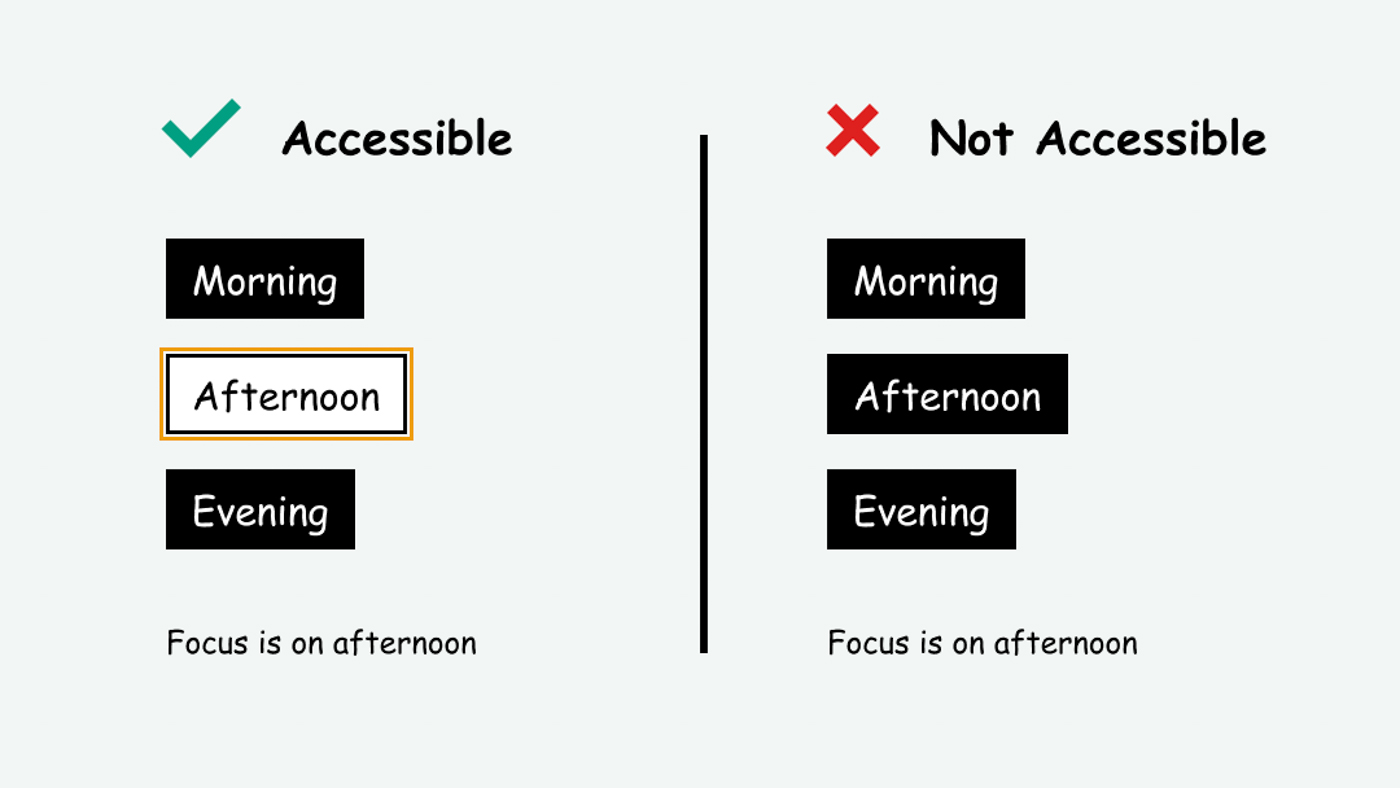Accessibility in HTML
Accessible Navigation and Focus Management
Navigation and focus management are essential elements to ensure that a website is accessible to all users, especially those who rely on keyboards or assistive technologies. In this chapter, we will explore how to implement smooth navigation and effectively manage focus in your HTML projects.

Principles of Accessible Navigation
For a site to be easily navigable:
- All interactive elements must be accessible via the keyboard.
- The navigation sequence should follow a logical order.
- The visual focus should be clear and easy to identify.
Keyboard Navigation
Users should be able to interact with all interactive elements using keys like Tab, Enter, and arrow keys.
Basic example of keyboard navigation:
html
Tab Order Customization
The tabindex attribute allows customizing the tab order of interactive elements.
Example of navigation customization:
html
Visible Focus Indicators
A clear focus indicator helps users identify the active element in navigation. This can be achieved using CSS to customize the focus style.
Example of focus styling:
html
Focus Management on Dynamic Elements
In dynamic web applications, it is important to manage focus when adding or updating elements on the page.
Example of dynamic focus change:
html
Focus Traps
In certain cases, such as modal windows, it may be necessary to limit focus within a specific container to prevent users from navigating out of it.
Example of a focus trap:
javascript
Conclusion
Accessible navigation and proper focus management are key elements to improve the user experience on any website. By implementing practices such as clear focus indicators, tab order customization, and focus handling on dynamic elements, you can ensure that your content is inclusive.
In the next chapter, we will explore how to use ARIA to enhance the accessibility of dynamic web applications. Don't miss it!
Support Chuck’s Academy!
Enjoying this course? I put a lot of effort into making programming education free and accessible. If you found this helpful, consider buying me a coffee to support future lessons. Every contribution helps keep this academy running! ☕🚀

Chat with Chuck

- Introduction to Accessibility in HTML
- Web Content Accessibility Guidelines (WCAG)
- Semantic HTML for Accessibility
- Accessible Forms and Inputs
- Accessible Images, Media, and Graphics
- Accessible Navigation and Focus Management
- ARIA: Accessible Rich Internet Applications
- Accessibility in Custom Components
- Evaluación y Pruebas de Accesibilidad
- Relationship Between Performance and Accessibility
- Creating an Accessible Workflow
- Course Conclusion: Accessibility in HTML













